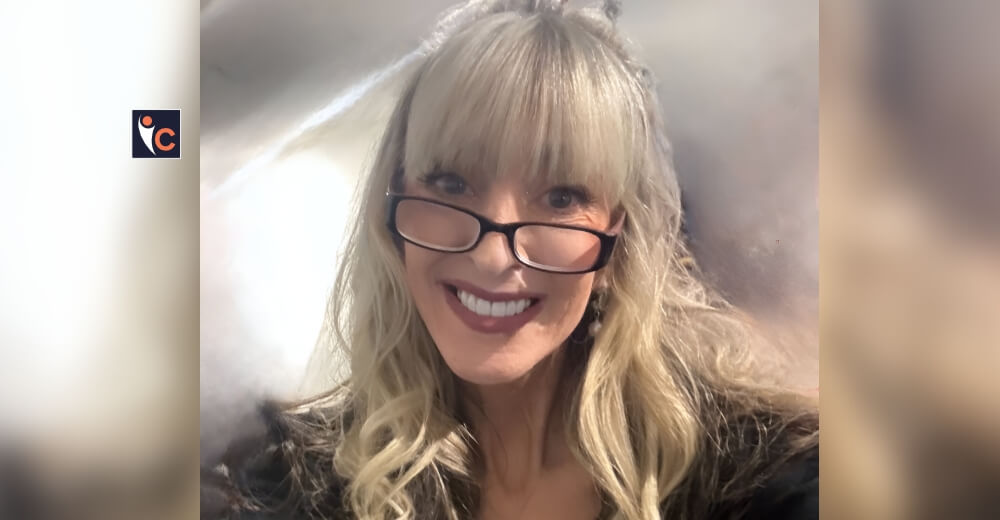Regenerative medicine—the field of medicine that repairs or replaces damaged tissues or organs—is among the most cutting-edge sectors of medical innovation today. Using a patient’s own skin is one of the most common forms of regenerative medicine.
TeVido BioDevices is one of the prominent names among the new age companies that provide these advance regenerative procedures. TeVido’s vision is to change how reconstructive surgery is done. Founded in the year 2011, the company is spearheaded by its Founder and CEO, Laura Bosworth, a former Fortune 50 exec with 30+ years of cross-functional industry experience.
In the following extract, we explore how the company has been driving change in the regenerative medicine arena with its cutting-edge manufacturing techniques that are combined with advances in the cellular therapy to restore lost pigmentation in the skin.
Epidermal cell transplants – clinical history
Skin transplants, or grafts, were initially described 2500-3000 years ago1. The procedure moves a piece of skin from one part of a patient’s body to another (known as an autologous transplant). During the Middle Ages, the techniques were largely lost. However, by the mid-late 1800s, they were back, and many of these techniques, with some modifications, are still used today.
Since the 1990s, one such modification – transplanting epidermal cells – has been successfully performed on thousands of patients. Yet this technique is only used by a small number of research facilities around the world due to the cost, complexity, and regulatory requirements of preparing the cells. It requires a considerable amount of expertise and does not fit into the clinical workflow of a busy dermatology or plastic surgery practice.
“Innovation comes in many flavors,” said Laura Bosworth, TeVido CEO, “ours is about simplifying a clinical procedure to make it easy to access.” She goes on to explain, “Skin cell transplants are a known surgical option for skin color regeneration. Yet, they are underutilized due to the challenges of processing the living cells for transplantation. TeVido BioDevices is making these life-changing skin cell transplants available to doctors and the patients who need them.”
TeVido leverages the regenerative power of a patient’s own body to repair and restore lost skin color. Skin can lose its natural color (pigment) due to scarring or skin conditions, such as vitiligo. Loss of skin color is difficult to treat, and available solutions are not clinically effective. However, 25 years of academic research show epidermal skin cell transplants are both safe and effective2. Very few doctors can offer this choice, until now, with TeVido’s TruPigment™.
What causes loss of skin color?
Vitiligo (vit-ih-LIE-go) is a disfiguring disorder that causes loss of skin color resulting in scattered white patches. It is due to an absence of functional pigment cells (melanocytes) in the affected area. About 1% of the world’s population has vitiligo, with an estimated 2-5 million in the U.S. It can be emotionally devastating, and there is no cure.
The aim of vitiligo treatment(s) is to reduce the contrast in color, but the most prevalent methods are highly variable, and when stopped, loss of skin color often returns. Up to 70% of patients are dissatisfied with their treatment results. Skin cell transplants are most suitable for those with stable vitiligo.
Depigmented (white/pale) scarring is a common complication of deep dermal wounds, including burns, caused by traumatic injury and surgery 3,4. In the U.S., this results in about 80 million new scars per year. Partial to full loss of normal skin color occurs in 15-25% of scars.
Many techniques, such as phototherapy, dermabrasion, chemical peels, micro-needling, ablative laser resurfacing, and tattoos, have all been used, none of which are recognized as consistently effective. Improving the appearance of hypopigmented scars has remained a clinical challenge with no current gold standard5.
A few other examples of skin conditions with loss of skin color are:
- Halo Nevi: A mole that is surrounded by a depigmented ring or ‘halo’; Estimated at 1% of the population; found most commonly in children. The average age of onset is 15 years6.
- Nevus Depigmentosus: Commonly localized hypo melanosis that is seen in children, typically presents at birth, 0.5%-1.25% of neonates, or by three years7; Est up to 3% of general population8.
- Idiopathic Guttate Hypomelanosis IGH: small (2-5mm) white spots9,10 likely due to sun exposure, a very common condition to the point of being almost universal in elderly fair-skinned individuals and most commonly a complaint of middle-aged (30’s) light-skinned women10.
Physical and Emotional scars
Having an appearance that is different from ‘the norm’ can have a profound psychological impact on an individual. It can result in low self-esteem, depression, anxiety, difficulty interacting with others, and the ability to seek or keep a job. Severe disfigurement can truly be a disability when it affects the ability to lead a normal life11.
Not only is a person’s daily life affected, but they face emotional reactions to the trauma itself, including feelings of grief towards the loss of their former appearance. Some experience a profound disruption to the understanding of who they genuinely are as an individual11.
For example, Veterans with ‘appearance-related injuries’ – such as marks or scars on the head, stomach, neck, or arms – have higher rates of depression and report greater post-traumatic stress disorder (PTSD) symptom severity than those who were not injured or did not identify as having appearance-related injuries12. According to the RAND Corporation13, almost 20% of the veterans who served in either Iraq or Afghanistan, suffer from major depression or post-traumatic stress disorder.
This applies beyond the military to the general population.
TeVido’s TruPigment™
The creation of a centralized, scalable facility to prepare the cells for transplantation allows patients easy access to a surgical option for pigment regeneration.
TeVido supplies the cell processing expertise, and the clinic focuses on what they know. This procedure is largely performed by dermatologists or plastic surgeons.
The patient will have two simple procedures that are scheduled a day apart. On the first day, the physician takes a ‘paper-thin’ sample of healthy skin and ships that to TeVido overnight. This is very similar to a shave biopsy. Generally, the sample of skin is about 1/5th the size of the area to receive the transplant. TeVido provides all the shipping materials and arranges the pickup to make it easy for the clinic.
At TeVido’s facility, the sample is processed following FDA guidelines under Title 21 Code of Federal Regulations (CFR) Part 1271 for Human Cell and Tissue Products (HCTPs). Here the cells are isolated and suspended in neutral media (liquid). This is known as a non-cultured epidermal suspension (NCES). TruPigment™—TeVido’s NCES—is intended for homologous, autologous use. In other words, it is only used on the person who provides the sample.
Quality control tests ensure each patient’s cell suspension meets safety requirements and cell viability. TruPigment™ is packed and shipped back to the clinic.
On the third day – the patient’s second appointment – the physician will prepare the depigmented area to receive the transplant. The very top layer of skin, the epidermis, is removed with a common procedure used in cosmetic and reconstructive surgery, laser resurfacing. This technique is commonly used to improve wrinkles or scars.
After the site is prepared, TruPigment™ is applied topically. The site is bandaged until cells are grafted, and the site has healed, which happens in 3-7 days.
With successful engraftment, the healthy melanocytes begin to produce pigmentation, and over the course of about six months, skin color begins to return. As with laser resurfacing, the patient may have redness and swelling during the healing period. The risks for these procedures are low but include possible scarring, infection, and color mismatch. Results vary between patients, and a pigment transplant may not work for everyone.
To see the best possible results, your doctor may recommend additional treatments such as the use of topical medications, light therapy, or additional surgical procedures.
Looking ahead to 2022
In the Fall of 2019, TruPigment™ was transplanted to a handful of patients. Working closely with a local vitiligo specialist, TeVido was looking forward to seeing initial results when COVID-19 hit. All elective procedures went on hold, and the future was uncertain.
With skills, equipment, and expertise in quality processes – TeVido quickly adapted and offered Boutique COVID-19 diagnostic testing to international travelers and local aesthetic clinics. This strategy has allowed TeVido to bring in revenue while continuing to work with early adopters of TruPigment™. The upcoming year will see TeVido ramp up activities with early adopters and build up the sales force.
A Dynamic Leader
With a B.S. in Engineering, Ms. Bosworth started her career in manufacturing process development and quickly moved into management. She honed her product development skills leading custom software projects that included the creation and execution of multiple technical sales support functions, enabling over $500M in sales. She was frequently recognized for her contributions to sales, and her ability to understand customer pain points led her to leadership roles in product marketing.
She launched several new business start-ups, such as professional services, within a larger corporation and has expertise in customer support services. Using her cross-functional and international experience, she developed corporate-wide quality strategies that reduced operating costs and improved customer satisfaction.
After 20 years in high-tech, Ms. Bosworth developed curricula, taught, and provided mentorship with several applied entrepreneurship programs, focused on mentoring aspiring underrepresented and women entrepreneurs to develop their own high growth companies.
She co-founded a Women’s Entrepreneurship Accelerator and led a task force to create a culture of innovation at U.T. El Paso, where she served on the College of Engineering Advisory Board. In 2013 she received a Golden Nugget Distinguished Alumni Award from UTEP.
In 2011, she founded TeVido, initially based on UTEP technology. She successfully led the company through a product pivot that lowered time and cost to market, resulting in a commercially available product, TruPigment™, in the Fall of 2019. The company has received grants from the National Science Foundation, the National Cancer Institute, and the LIVESTRONG Foundation and is currently privately funded.
Bequeathing the Keys to Excellence
We asked Laura, what advice she’d give to those venturing into the discipline and business of Regenerative Medicine, to which she said, “There are core skills that translate across companies and industries. After 20 years in high tech, I was passionate about my move into a field where I can improve people’s daily life. But I found many people in the healthcare industry to be skeptical that such a move was possible. That was confusing to me. Every new role I took in “Corporate America” was a complete shift from what I had done before.”
“I developed manufacturing processes and then moved to software development for semiconductor chip design. I had no software experience or chip design experience! I then moved into a role working directly with customers who were deploying new IT infrastructure. I had never worked with customers and knew little about IT systems. This is what can be great about working in “Corporate America.”
“Big companies have a vast diversity of roles, and they are willing to mentor promising individuals. They are looking for people who can get things done. Many companies deliberately move these people across functions to develop a broad experience base in the leadership “pool”. These experiences are transferable – even across industry. Guess what? The level of complexity of semiconductor manufacturing is similar to that found in GMP standards for medical devices. Selling into a hospital is difficult and takes a long time. So is selling into a Fortune 500 company and selling into the automotive industry is different than selling into a retail company.”
“You are always learning something specific – but there are a great many skills that will help you transition from role to role and pick things up quickly. What doesn’t transition is relationships. If your experience is selling into FORD and you want to become a salesperson in cardiology – that’s going to be hard! Unless, you have another way in. So, if you want to maximize your career flexibility try to have a variety of roles and know how to make things happen in each. Figuring it out and getting it done is what will pay off.”
Recent Awards and Recognition
- October 2020 – TeVido BioDevices was one of six companies invited to present at the 2020 Fall Clinical Dermatology Conference to a panel of expert judges and audience members at the Skin Health Innovation Competition. This is a chance for attendees to learn about emerging solutions in clinical dermatology and aesthetic medicine.
- January 2020 – TeVido BioDevices was one of five start-ups selected to present at the Inaugural Aesthetics Technology Summit (ATS) in Southern California. ATS brings together leading physicians, industry, and innovators to discuss ground-breaking medical aesthetic technologies as well as unmet clinical needs and new business opportunities.
- September 2019 – TeVido BioDevices Announces Availability of TruPigment™ for use in restoring lost skin color.
Quote: “TeVido leverages the regenerative power of a patient’s own body to repair and restore lost skin color.”
URL: http://tevidobiodevices.com
Bibliography
- Skin Grafting: History of the Procedure, Indications, Relevant Anatomy. Available at: https://emedicine.medscape.com/article/1129479-overview. (Accessed: 26th October 2021)
- Gupta, S., Narang, T., Olsson, M. J. & Ortonne, J. P. Surgical Management of Vitiligo and Other Leukodermas: Evidence-Based Practice Guidelines. in Surgical Management of Vitiligo (eds. Gupta, S., Olsson, M., Kanwar, A. J. & Ortonne, J.) 69–79 (Blackwell Publishing Ltd, 2007). doi:10.1002/9780470987568.ch9
- Sterling, J. P., Heimbach, D. M. & Gibran, N. S. 15 Management of the Burn Wound. (2010). doi:10.2310/7800.S07C15
- Mulekar, S. V., Issa, A. Al & Eisa, A. Al. Treatment of post-burn leucoderma with non-cultured melanocyte-keratinocyte transplantation (MKTP). Burns 37, 448–452 (2011).
- Siadat, A. H. et al. Repigmentation of Hypopigmented Scars Using Combination of Fractionated Carbon Dioxide Laser with Topical Latanoprost Vs. Fractionated Carbon Dioxide Laser Alone. Indian J. Dermatol. 60, 364–8 (2015).
- Zabawski, E. J. et al. Halo Nevus: Background, Pathophysiology, Epidemiology. Medscape (2016). Available at: https://emedicine.medscape.com/article/1057446-overview#a6. (Accessed: 17th April 2018)
- Rashighim Mehdi MD & Burgin Susan MD. Nevus depigmentosus. VisualDX (2017). Available at: https://www.visualdx.com/visualdx/diagnosis/nevus depigmentosus?diagnosisId=52028&moduleId=101. (Accessed: 17th April 2018)
- Achromic Nevus. DoveMed (2015). Available at: https://www.dovemed.com/diseases-conditions/achromic-nevus/. (Accessed: 17th April 2018)
- Falabella, R. et al. On the pathogenesis of idiopathic guttate hypomelanosis. J. Am. Acad. Dermatol. 16, 35–44 (1987).
- Gorman, Christopher R, M. & et al. Idiopathic Guttate Hypomelanosis: Background, Pathophysiology, Epidemiology. Medscape (2017). Available at: https://emedicine.medscape.com/article/1068422-overview#a4. (Accessed: 17th April 2018)
- Harcourt, Diana; Rumsey, N. Psychology and visible difference | The Psychologist. Br. Psychol. Soc. 21, 486–489 (2008).
- Tanielian, T. et al. Invisible Wounds: Mental Health and Cognitive Care Needs of America’s Returning Veterans. RAND Corporation (RAND Corporation, 2008). doi:10.2307/3522054
- Weaver, T. L., Walter, K. H., Chard, K. M. & Bosch, J. Residual Injury, Appearance-Related Concerns, Symptoms of Post-Traumatic Stress Disorder, and Depression Within a Treatment-Seeking Veteran Sample. Mil. Med. 179, 1067–1071 (2014).
- Fischer, H. A Guide to U.S. Military Casualty Statistics: Operation Freedom’s Sentinel, Operation Inherent Resolve, Operation New Dawn, Operation Iraqi Freedom, and Operation Enduring Freedom. (2015).
- Burn Incidence and Treatment in the United States:2016. American Burn Association Available at: http://www.ameriburn.org/resources_factsheet.php. (Accessed: 18th July 2015)
- Crandall, M. A. Wound Care Markets Vol. III Surgical and Trauma Wounds. III, (2009).
https://tevidobiodevices.com/covid-19-pcr-testing-austin-fast/















